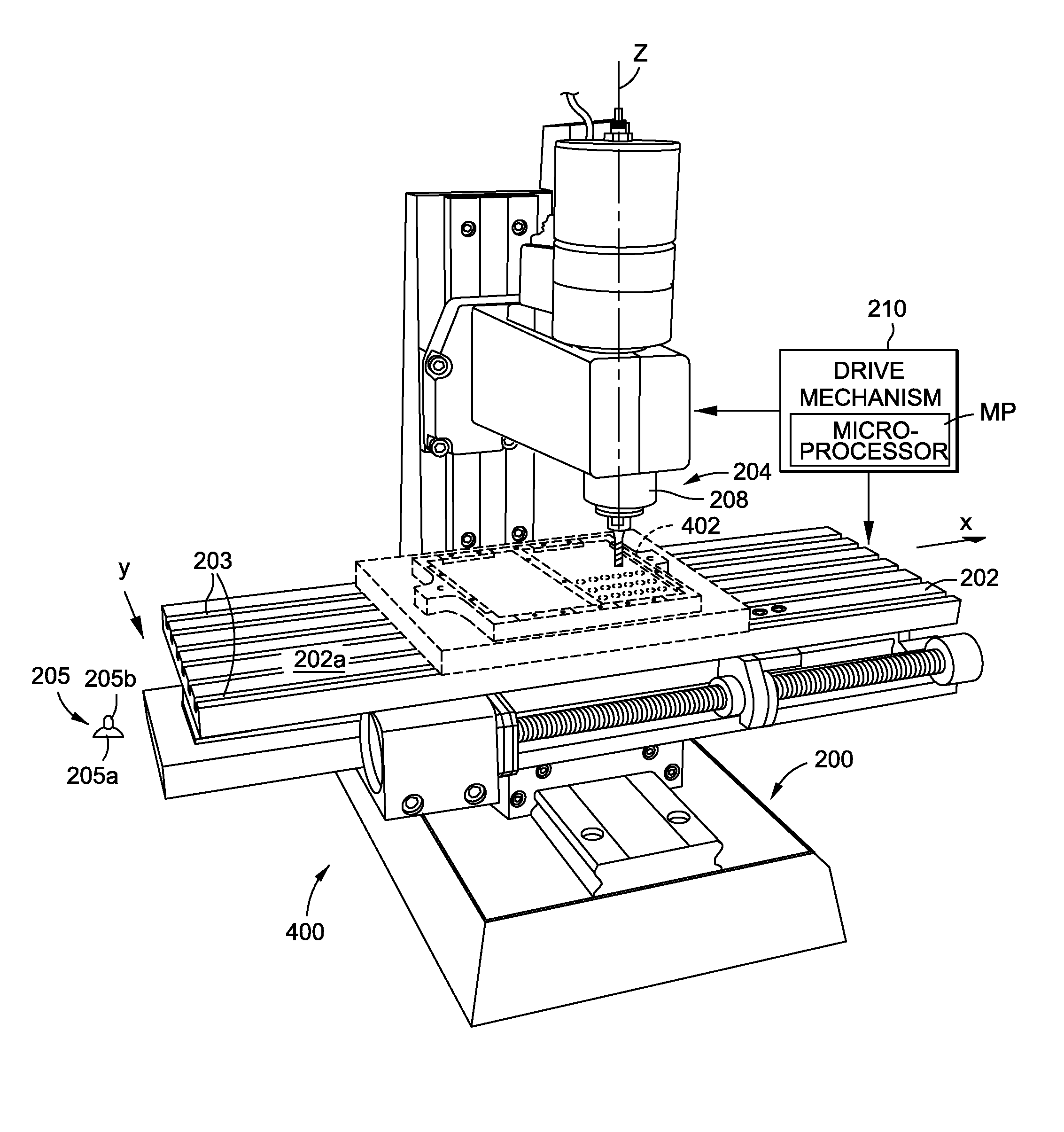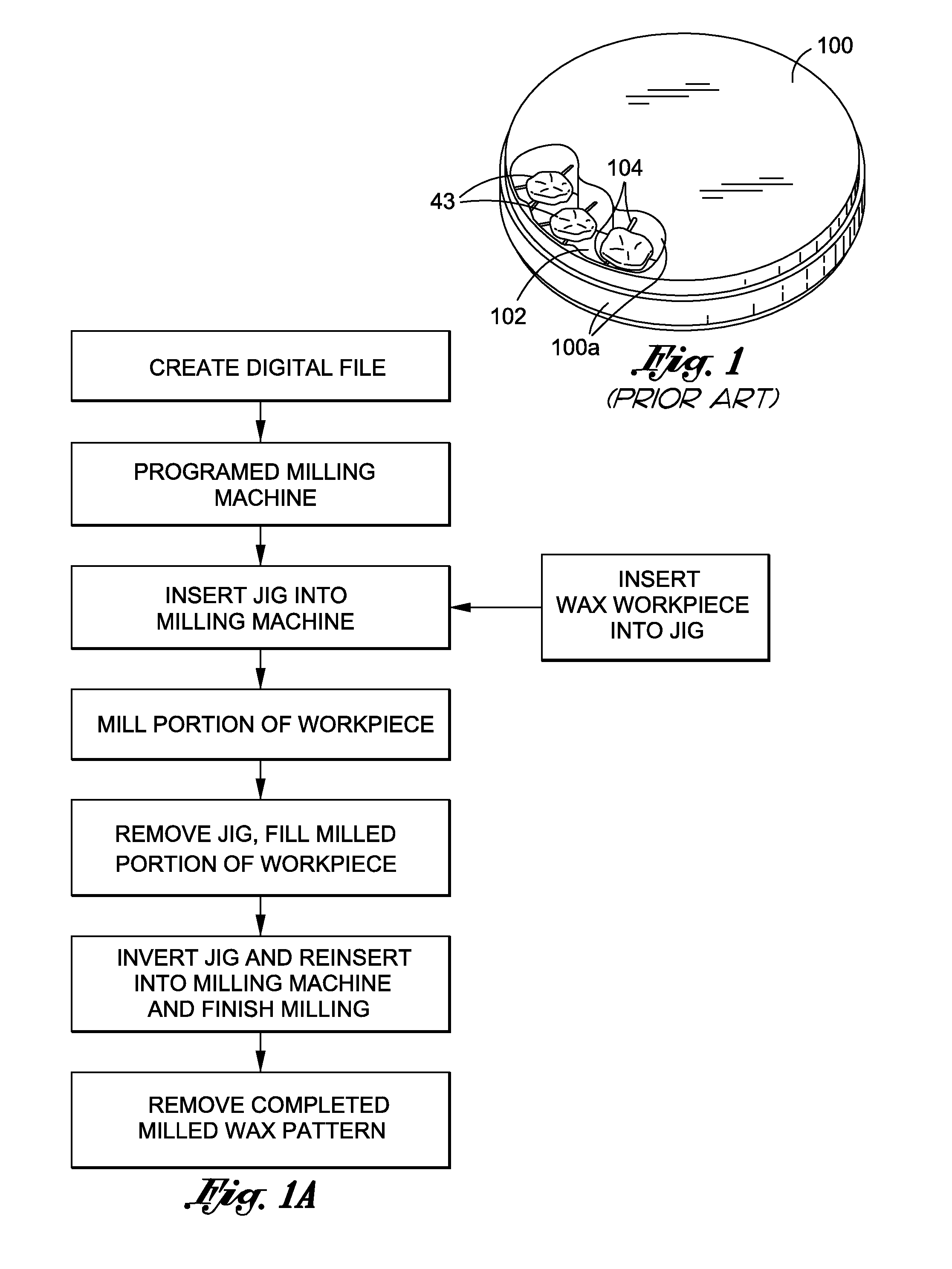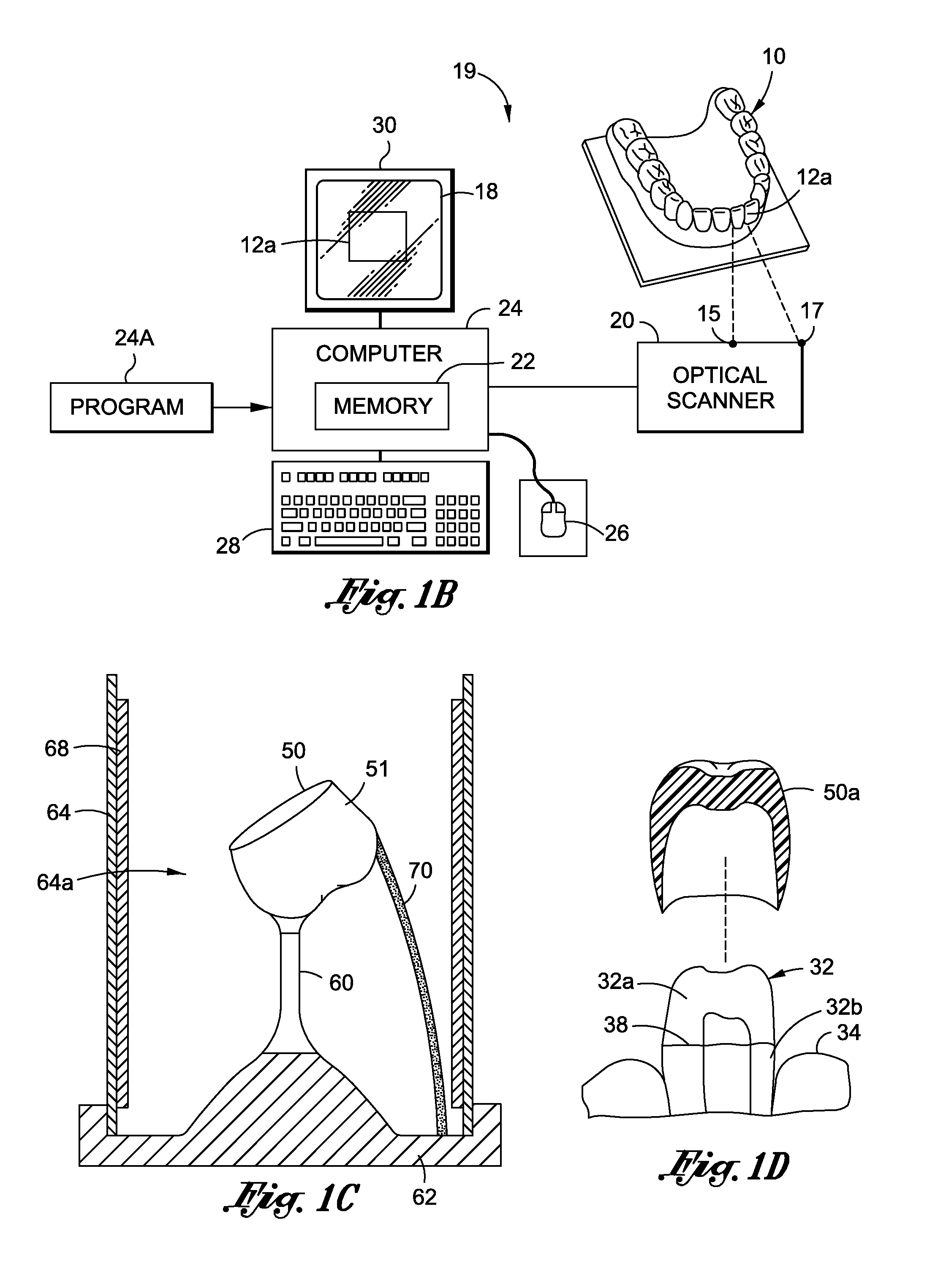Jig device and apparatus and method of making a dental prosthesis or pattern therefor
a dental prosthesis and pattern technology, applied in the direction of impression caps, process and machine control, instruments, etc., can solve the problems of time-consuming manual hand work and dental prosthesis
- Summary
- Abstract
- Description
- Claims
- Application Information
AI Technical Summary
Benefits of technology
Problems solved by technology
Method used
Image
Examples
Embodiment Construction
.” The claims that follow define our jig device and apparatus and method of making a prosthesis, distinguishing them from the prior art; however, without limiting the scope of our jig device and apparatus and method of making a prosthesis as expressed by these claims, in general terms, some, but not necessarily all, of their features are:
[0010]One, in our method a milling machine mills from a two-sided work piece a dental prosthesis essentially free of defects. The milling machine has a cutting tool that terminates at a cutting tip that has, at a start position, an exact spatial relationship with respect to a working reference plane of the milling machine. A first side of the work piece is presented to the cutting tool, and starting from the start position, the cutting tool is operated to partially cut through the first side to form in the work piece a cavity having a surface part corresponding to at least a portion of the prosthesis being made. A floor of the cavity may include the...
PUM
| Property | Measurement | Unit |
|---|---|---|
| distance | aaaaa | aaaaa |
| distance | aaaaa | aaaaa |
| open area | aaaaa | aaaaa |
Abstract
Description
Claims
Application Information
 Login to View More
Login to View More - R&D
- Intellectual Property
- Life Sciences
- Materials
- Tech Scout
- Unparalleled Data Quality
- Higher Quality Content
- 60% Fewer Hallucinations
Browse by: Latest US Patents, China's latest patents, Technical Efficacy Thesaurus, Application Domain, Technology Topic, Popular Technical Reports.
© 2025 PatSnap. All rights reserved.Legal|Privacy policy|Modern Slavery Act Transparency Statement|Sitemap|About US| Contact US: help@patsnap.com



